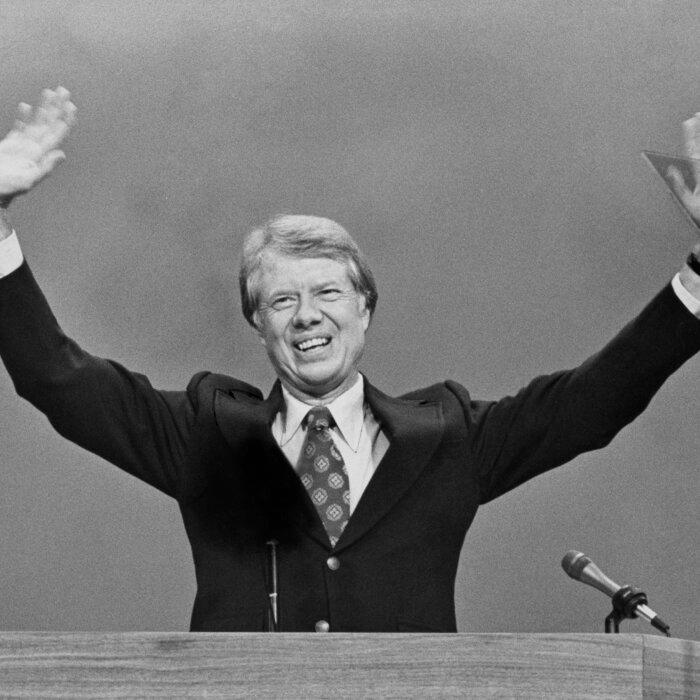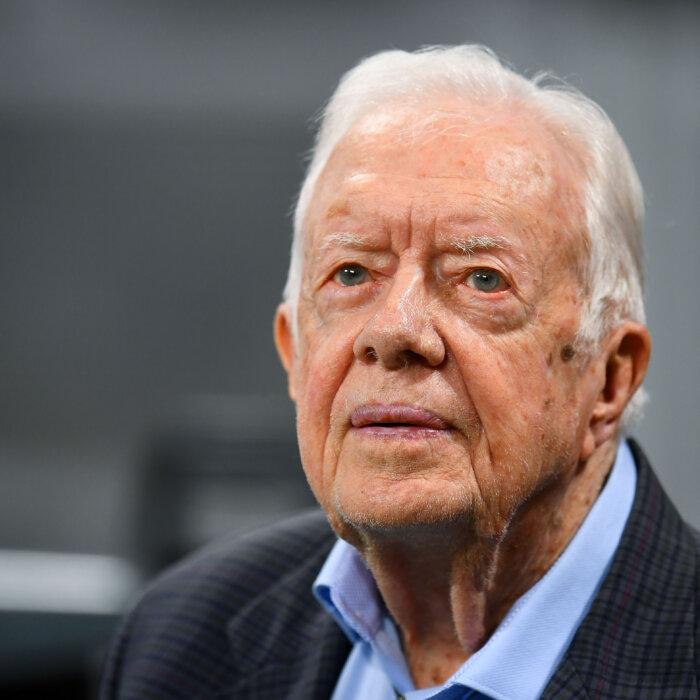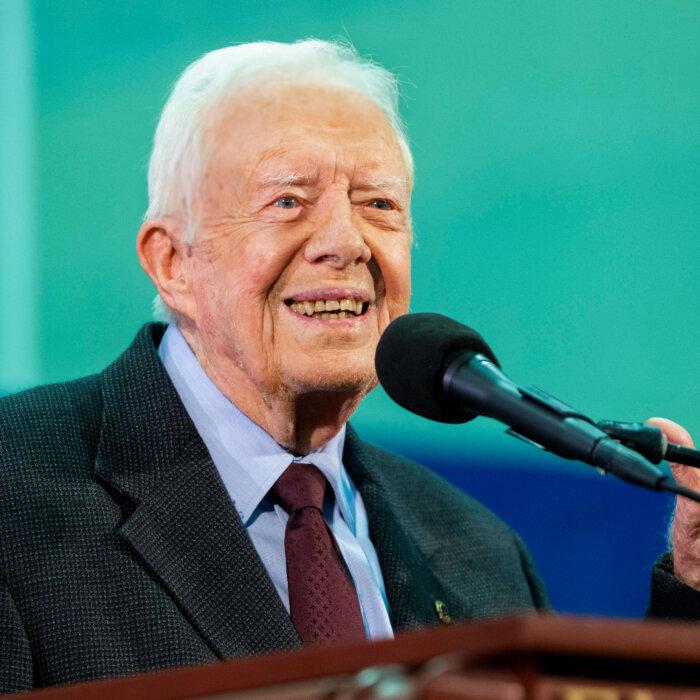Former President Jimmy Carter died on Dec. 29 at the age of 100, leaving behind a decades-long legacy in politics, humanitarian work, and global peace negotiations.
Despite only serving a single term in the White House from 1977 to 1981, Carter’s life is one of diverse achievement, from his time in the Navy while studying nuclear physics to his years as a peanut farmer, to his rapid rise from Georgia politics to becoming the top executive in the United States.
When Carter’s term ended during the fallout of the Iran Hostage Crisis, the 39th president went on to found the Carter Center to provide international conflict resolution. His work with the Carter Center earned him a 2002 Nobel Peace Prize for his efforts at global diplomacy.
Here are 10 things to know about Carter, the longest-lived U.S. president so far.
1. First US President Born in a Hospital
The former president was born James Earl Carter in the small town of Plains in rural Georgia in 1924. His mother, Lillian Carter, gave birth to him at what was then called Wise Sanitarium, now the Lillian G. Carter Nursing Center. She worked at the facility as a nurse. It had an open room while Lillian Carter was in labor, and Dr. Sam Wise suggested she have her baby there instead of at home.
Carter is also believed to be the first U.S. president to live in public housing, as there was a postwar housing shortage after he returned home from the Navy in 1953 following the death of his father, Earl. Carter, along with his wife, Rosalynn, and their sons, moved into a new public housing project that was located within several blocks of Plains High School. They were the first tenants in the facility’s unit 9.

(Left) U.S. politician Jimmy Carter crouches down to pet his dog on his peanut farm in Plains, Ga., in 1970. (Right) Rosalynn Smith Carter, wife of President Jimmy Carter, grew up alongside the future president in Plains, Ga., and assisted him in running his family peanut farm. Archive Photos/Hulton Archive/Getty Images
This experience later helped inspire the Carters’ interest in working with Habitat for Humanity. Both Jimmy and Rosalynn Carter volunteered for the organization for one week every year until 2020.
2. Navy Nuclear Submarine Work
After completing work at Georgia Southwestern College and the Georgia Institute of Technology, Carter earned a science degree in 1946 from the Naval Academy in Annapolis, Maryland, the same year he married Rosalynn.
Carter served as a submariner in the Navy’s Atlantic and Pacific fleets before earning the rank of lieutenant. Adm. Hyman Rickover chose Carter for the new nuclear program, an assignment that sent him to Schenectady, New York, before he completed his graduate work in reactor technology and nuclear physics at Union College.
Carter soon became the senior officer of the pre-commissioning crew on the USS Seawolf, the second nuclear submarine.
“I was one of the few people in the world who had clearance to go into a nuclear power plant,” Carter said in a 2009 interview. “We were fairly well instructed then on what nuclear power was, but for about six months after that, I had radioactivity in my urine … They let us get probably a thousand times more radiation than they would now.”
He served as a naval officer for seven years until 1953, when his father died from pancreatic cancer, prompting a move back to Plains. There Carter took the reins of the family peanut business, Carter Farms.
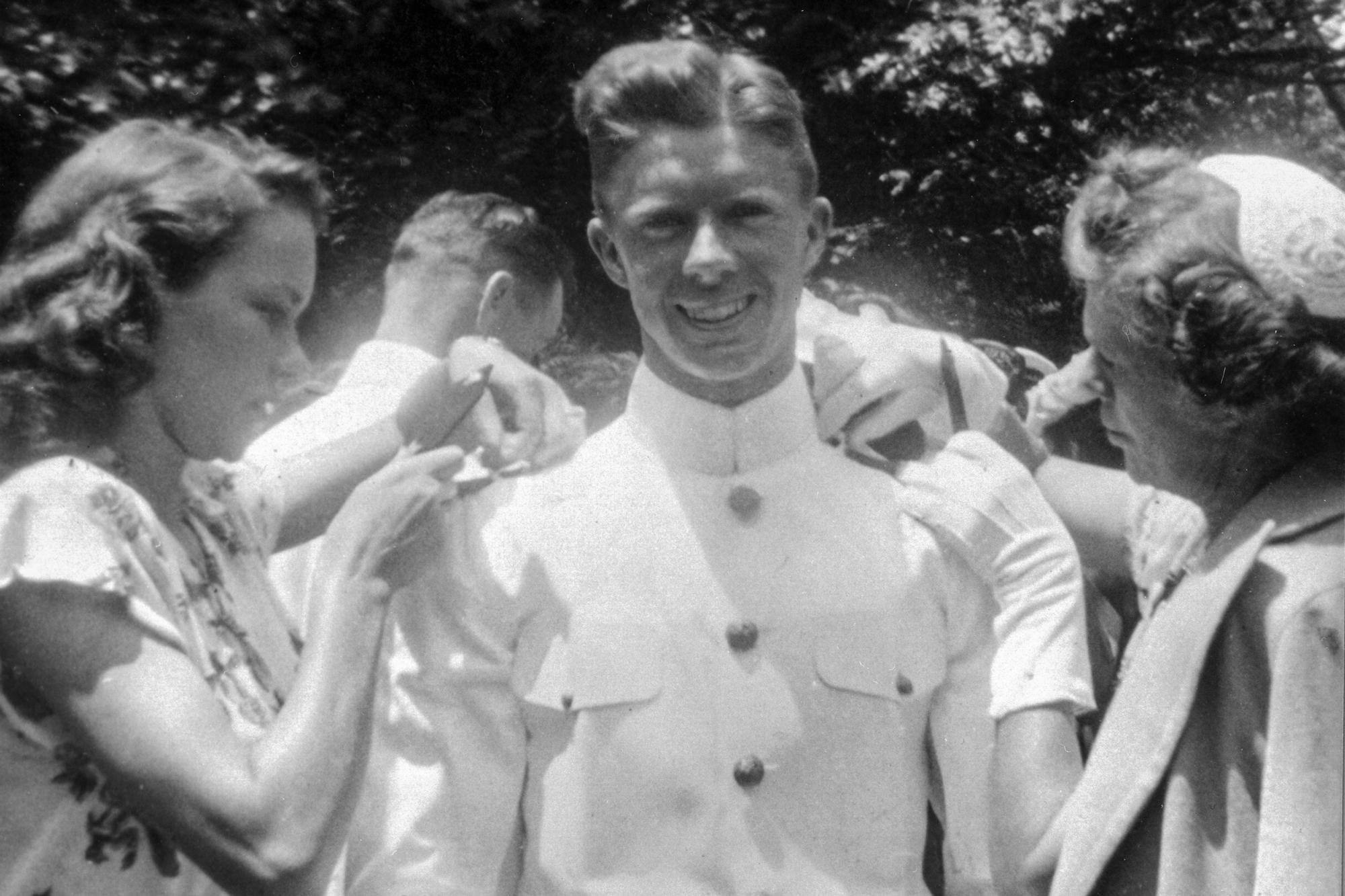
Jimmy Carter with Rosalynn Smith and his mother at his graduation from the United States Naval Academy in Annapolis, Md., on June 5, 1946. Public Domain
3. New Post-Inauguration Tradition
Carter was the first president to walk from the U.S. Capitol to the White House during his 1977 inaugural parade, defying Secret Service advice. The walk across the pavement of Pennsylvania Avenue quickly became a new post-inauguration presidential tradition.
At the time, a train of Carter supporters called the “Peanut Special” traveled from Georgia to Washington to witness the inauguration parade. It was a reference to the “Presidential Express,” a train that took supporters from Warm Springs, Georgia, to Washington in 1933 for the first inauguration of Franklin Delano Roosevelt, who was considered Georgia’s “adopted son” despite being a native New Yorker.
President Barack Obama also stepped outside his limousine to walk to the White House in 2009 and 2013 during both inaugural parades.
President-elect Donald Trump followed the tradition in 2017 with his wife, Melania, and son, Barron, at his side, and will likely do so again in January for his second inauguration.

President Jimmy Carter walks with his wife, Rosalynn, and his daughter, Amy, followed by the rest of his family during the inaugural parade, in Washington on Jan. 20, 1977. This was the first time in history that a president had not ridden to the White House in a carriage or automobile in the grand parade to celebrate his taking the oath of office. -/Consolidated News/AFP via Getty Images
4. Lived in Same Georgia Home for More Than 60 Years
Carter purchased his home at 209 Woodlawn Avenue in 1961, which became his residence during his years in the Georgia Senate before he rose to governor and eventually president. The modest, ranch-style house became his home again in 1981 after he left the White House.
Carter is one of only a few U.S. presidents in recent history to resume living in the same home they resided in before becoming president. It is the same home where Carter and Rosalynn were receiving hospice care up to their deaths in 2024 and 2023, respectively.
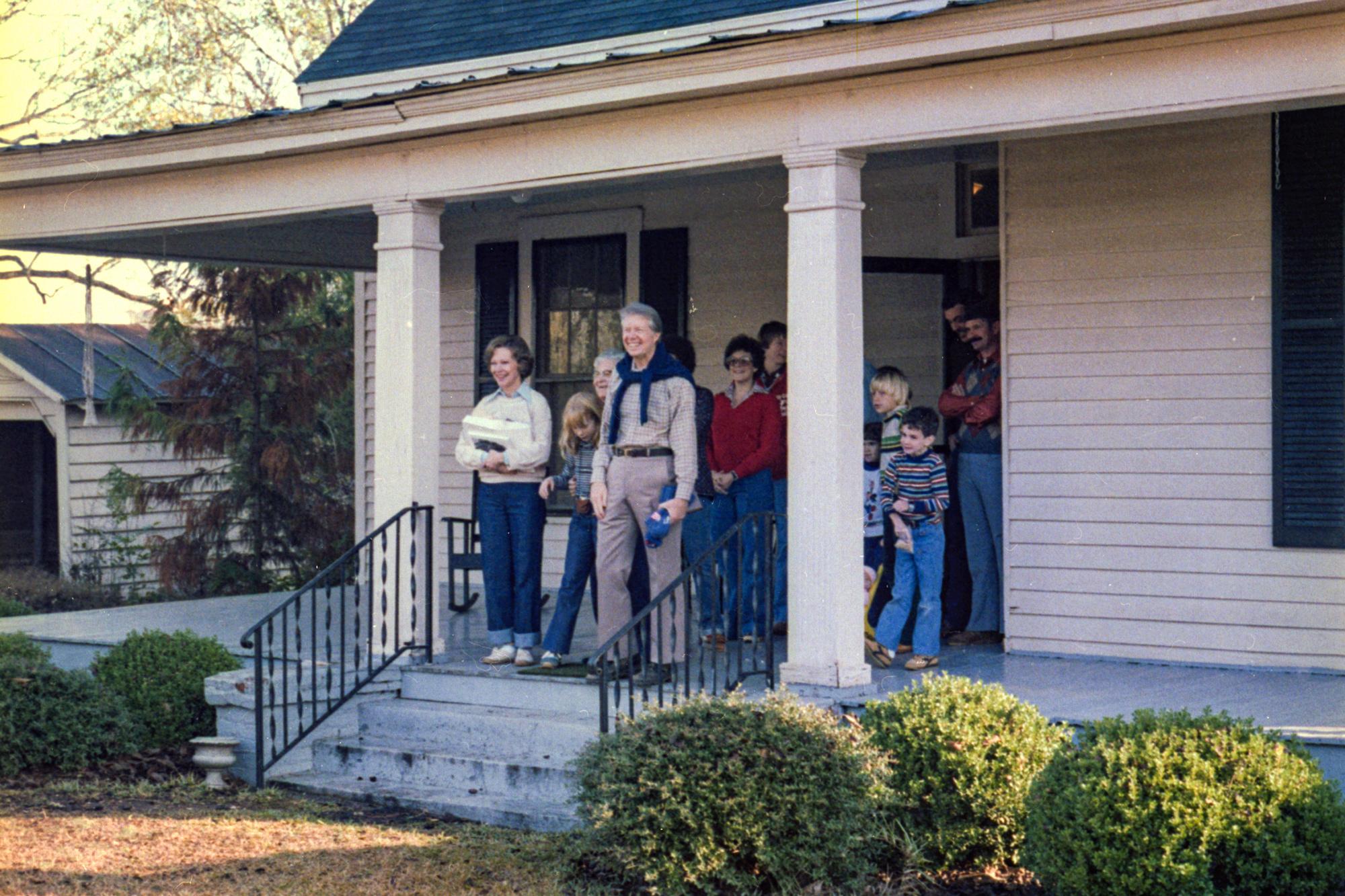
President Jimmy Carter and First Lady Rosalynn Carter celebrating Christmas at their house in 1978. Public Domain
5. ‘Dark Horse’ Presidential Candidate
During his first term as governor of Georgia, the Democratic National Committee chose Carter as its campaign chairman for the 1974 congressional and gubernatorial elections. That year, Democrats expanded their majorities in the Senate and the House of Representatives during the fallout from the Watergate scandal.
Carter’s success in that role led to him announcing a presidential run on Dec. 12, 1974. He was nominated on the first ballot at the 1976 Democratic National Convention, where he chose Sen. Walter F. Mondale (D-Minn.) as his running mate.
Carter, considered by many to be a “dark horse” nominee, or a lesser-known figure who quickly rises to prominence, was in a crowded primary that year. The party’s 1976 bench included California Gov. Jerry Brown, Rep. Mo Udall (D-Ariz.), Sen. Henry Jackson (D-Wash.), Alabama Gov. George Wallace, and Sen. Frank Church (D-Idaho). Carter won the primary with more than 39 percent of the vote and more than 1,100 delegates.

Jimmy Carter and his running mate, Walter Mondale, at the Democratic National Convention in New York City in July 1976. Public Domain
6. Presidency Marred by Energy Crisis
Even before Carter took office in 1977, the United States was dealing with an energy crisis after the Organization of Arab Petroleum Exporting Countries declared an oil embargo following the breakout of the Yom Kippur War in 1973. Oil, gas, and energy prices soared as a result.
Carter then oversaw the establishment of the Department of Energy after announcing his National Energy Plan in the president’s first major energy speech, calling the crisis “the moral equivalent of war.”
James R. Schlesinger became the first secretary of energy. The agency under Carter provided incentives for renewable energy and coal and worked to deregulate oil and natural gas prices, while also banning new power plants from using gas or oil.
Carter also spearheaded a program to limit air conditioning in most commercial, government, and other public buildings to 78 degrees Fahrenheit in an effort to conserve energy use.
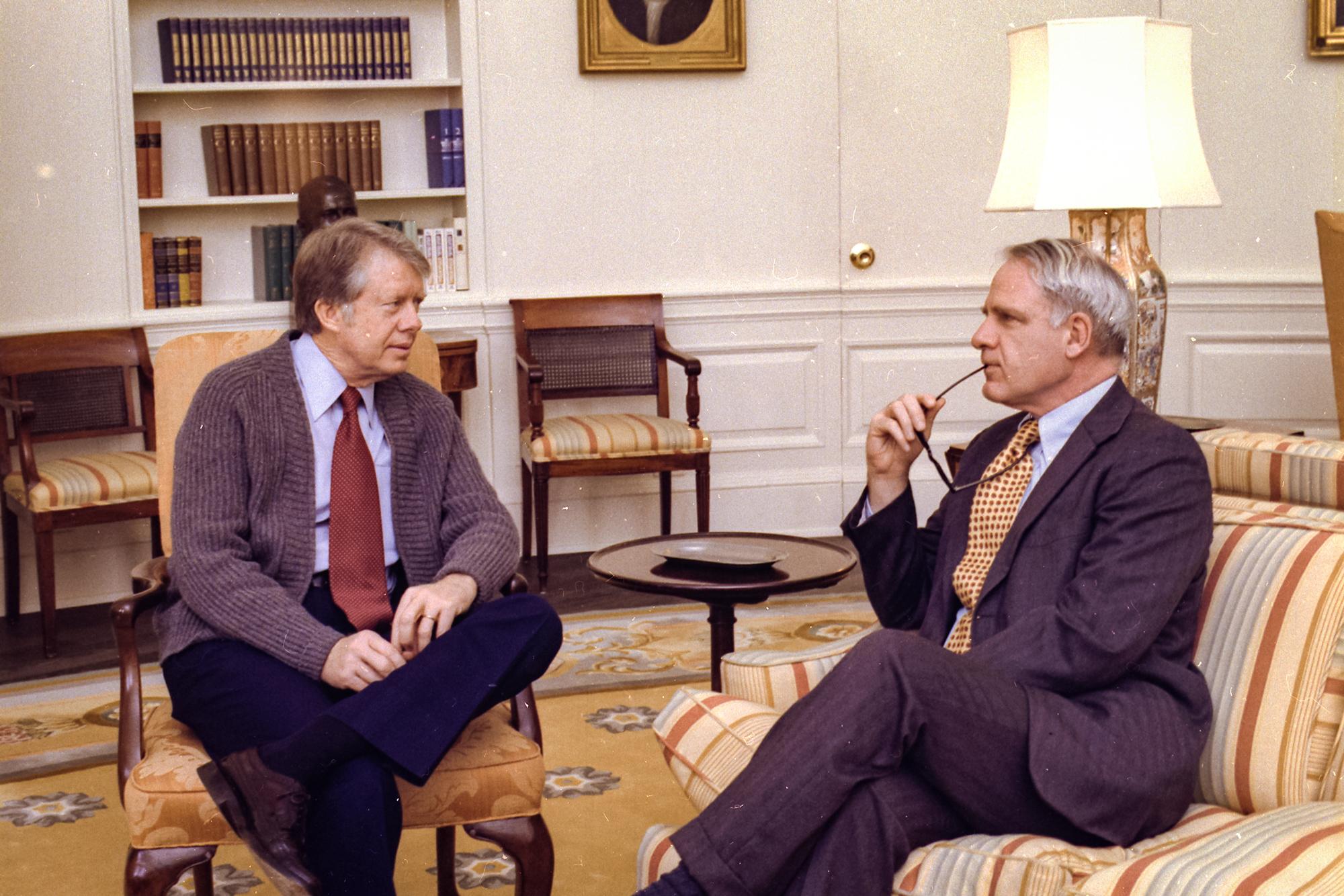
Secretary of Energy James Schlesinger with President Jimmy Carter at the Oval Office on March 23, 1977. Public Domain
7. Iran Hostage Crisis Ends on Final Day in Office
One of the core flashpoints of Carter’s presidency was the Iran Hostage Crisis, when 52 American diplomats and citizens from the U.S. embassy in Tehran were kidnapped during the 1979 Iranian revolution by Islamic fundamentalists.
The fundamentalists held the hostages for 444 days, eventually releasing the Americans on Carter’s final day in office. The crisis dominated the media and news cycle during the last months of Carter’s administration, leading to widespread scrutiny of his foreign policy. During this time, the Soviet Union took advantage of the United States’ situation and supported Marxist uprisings in Ethiopia, Angola, Mozambique, and Afghanistan.
The Soviet Union’s escalations led Carter to take a more confrontational stance with the regime, ultimately contributing to the resignation of U.S. Secretary of State Cyrus Vance in April 1980.
The crises with Iran and the Soviet Union added to Carter’s declining popularity ahead of the 1980 election against former movie star and California Gov. Ronald Reagan, who went on to become America’s 40th president.
Carter also approved an unsuccessful attempt to rescue the hostages in 1980, Operation Eagle Claw, which failed when a violent wind-driven sandstorm damaged U.S. military equipment. An RH-53D helicopter crashed, killing five airmen and three Marines.

President Jimmy Carter and General Secretary of the Communist Party of the Soviet Union Leonid Brezhnev sign the SALT II treaty at the Hofburg Palace in Vienna, on June 18, 1979. Public Domain
8. Creation of Carter Center Leads to Nobel Peace Prize
After losing the 1980 election, Carter founded the Carter Center in 1982 with a goal to eradicate disease, advance democracy, protect human rights, and provide international conflict resolution worldwide. The center’s achievements in global conflict mediation include work in the countries and regions of Ethiopia (1989), North Korea (1994), Liberia (1994), Haiti (1994), Sudan (1999), Uganda (1999), Venezuela (2002 to 2003), Colombia (2008), and the Middle East (2003 to present).
That work led to the Norwegian Nobel Committee awarding Carter the 2002 Nobel Peace Prize for his “decades of untiring effort to find peaceful solutions to international conflicts, to advance democracy and human rights, and to promote economic and social development.”

Former President Jimmy Carter, accompanied by his wife, Rosalynn, waves to journalists after he crosses over the border into North Korea on June 15, 1994. Some of the Carter Center’s achievements in global conflict mediation include work in the countries and regions of Ethiopia (1989), North Korea (1994), Liberia (1994), Haiti (1994), Sudan (1999), Uganda (1999), Venezuela (2002 to 2003), Colombia (2008), and the Middle East (2003 to present). Choo Youn-Kong/AFP via Getty Images
9. First President to Live to 100
While Carter’s office did not publicly post the former president’s cause of death on Dec. 29, he had been in hospice care for 22 months after entering hospice at his home in Plains in February 2023. At the time, he said he was stopping medical intervention care and would only receive hospice services. Previously, Carter had been treated for metastatic melanoma, a form of skin cancer that spreads to the brain.
He is the first U.S. president to live to 100. Former President George H.W. Bush lived to 94 years old and former presidents Gerald Ford and Ronald Reagan both lived to be 93. The average lifespan for a U.S. president is 72.6 years.

A sign celebrating the 100th birthday of former President Jimmy Carter is displayed on the North Lawn of the White House on Oct. 1, 2024. Kent Nishimura/Getty Images
10. Carter Won 3 Grammy Awards
While Carter was not known as a musician, he had an affinity for the art and championed it as a key cultural achievement.
He shared friendships with artists Willie Nelson, Bob Dylan, and the Allman Brothers, earning the nickname “the rock ‘n’ roll president.” Carter invited Dylan and his bandmates to the governor’s mansion prior to his presidential run, and the Allman Brothers put on fundraising shows for Carter in 1976 and advocated for the candidate while they toured the United States.
Carter, an author of 32 books, also won three Grammy awards for Best Spoken Word Album for “Our Endangered Values: America’s Most Moral Crisis” (2006), “A Full Life: Reflections at Ninety” (2015), and “Faith: A Journey For All” (2018).
One of the three Grammys is on display in Plains at the Jimmy Carter National Historical Park.

Former President Jimmy Carter holds up a copy of his new book “Faith: A Journey For All” at a book signing event at a Barnes & Noble bookstore in New York City on March 26, 2018. Drew Angerer/Getty Images
Original News Source Link – Epoch Times
Running For Office? Conservative Campaign Consulting – Election Day Strategies!

